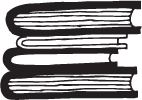Maiden voyage
I passed my demonstration tour at Petaluma Adobe (Petaluma, California) yesterday afternoon. After months of Saturday classes and studying I offered a mock tour to an experienced docent who mentored me and offered many helpful suggestions and additional information. I was feeling fragile in the process. After cramming like a college student I was afraid if I shook my head the data would all fall out or get jumbled up into some really stupid statements!
Petaluma Adobe was General Mariano Vallejo's home-away-from-home and factory to support his troops stationed in Sonoma, California (about six miles away) in the 1830's when this area was part of Mexico and under the control of Mexico City.
Now that I have the basic skeleton of understanding I will be able to add information every week as I continue to study and lead tours on my own.
Here's a view of what remains of the adobe and the beehive ovens. In its prime the rancho was the largest in the area. Some 20,000 head of cattle roamed to supply leather for good used locally for boots for the soldiers in Sonoma and the presidio in San Francisco and around the Horn as far away as Boston to supply the belts for machinery and to make needed goods such as shoes.
Here is another view extending the building in the first photo. Now you get a better idea of the size of the adobe. From 400 - 200 Native Americans, Hawaiians and gringos lived in the area. Some of the servants and household staff lived upstairs in the adobe which was also where General Vallejo entertained occasional guests. His primary home, however, was in Sonoma where he lived with his wife and 16 children. The downstairs rooms housed the weaving, carpentry and gristmill with sacks of grains and tannery with stacks of leather.
Part of the forge is shown here. The oxcart was used to transport tallow and leather by road to the Petaluma River where riverboats took the cargo to San Pablo and San Francisco Bays for transfer to ships headed to the East Coast.
I'll take more photos, better ones, and add to my tour another day. In the meantime, I gotta go study more!
















































































































Look forward to learning more!
ReplyDeleteNice story you got here. I'd like to read a bit more concerning this topic. Thnx for sharing this information.
ReplyDeleteJoan Stepsen
Latest gadget